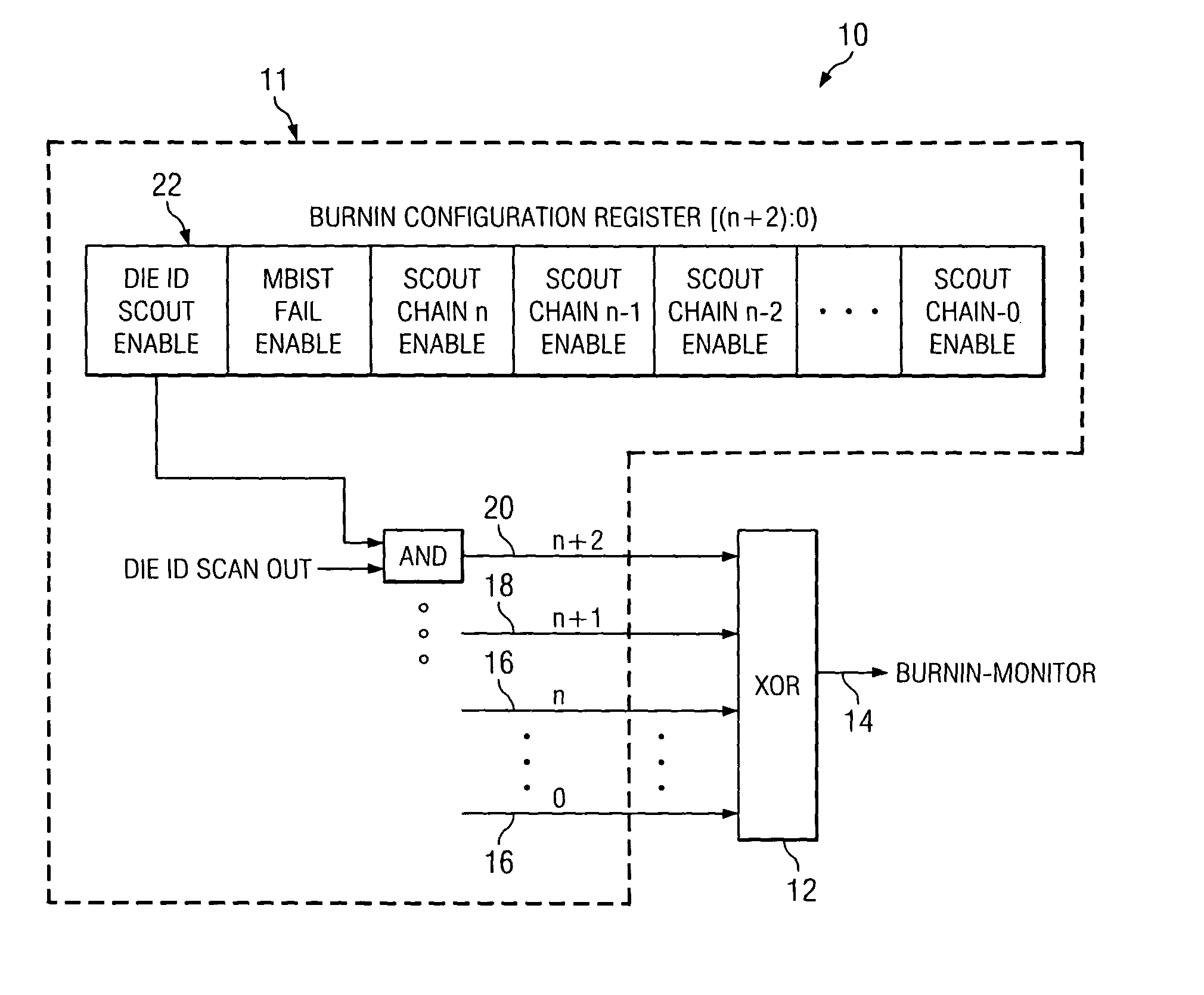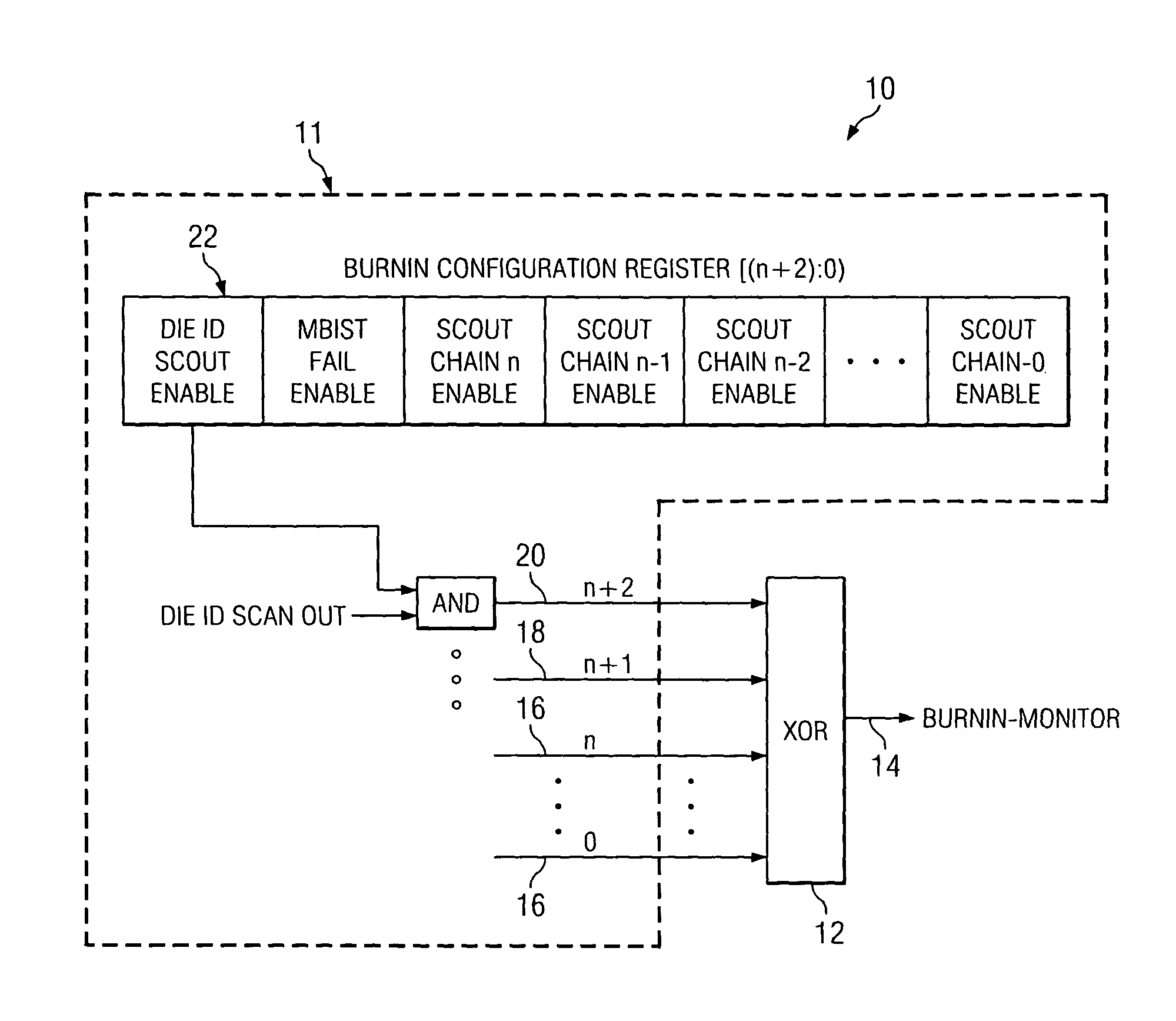Mechanism to enhance observability of integrated circuit failures during burn-in tests
a technology of integrated circuit and burn-in test, which is applied in the direction of electronic circuit testing, measurement devices, instruments, etc., can solve the problems of difficult monitoring of multiple devices on a board, limited number of devices can be burned-in, and weak devices may show failures, etc., to increase diagnostics and enhance fault isolation. scope
- Summary
- Abstract
- Description
- Claims
- Application Information
AI Technical Summary
Benefits of technology
Problems solved by technology
Method used
Image
Examples
Embodiment Construction
[0028] The Ex-OR approach to generate a monitored output during integrated circuit burn-in testing is known, as stated herein before. The present inventors recognized that this known approach however, is disadvantageous in that it increasingly limits the scope of fault isolation as the desired number of devices under test increases, and therefore the available number of monitor outputs decreases.
[0029] Looking now at the FIGURE, a block diagram illustrates a system 10 for enhancing observability of integrated circuit failures during burn-in testing according to one embodiment of the present invention. The system 10 consists of n+2 AND gates (only one AND gate is depicted in the FIGURE), a configuration register 22 of n+2 width, and a single XOR gate 12. The present inventors alone realized a selection mechanism (sub-system) 11 for individual scan chain 16 and memory built-in self-test (BIST) status 18 outputs to implement this system 10.
[0030] The implementation shown in the FIGUR...
PUM
 Login to View More
Login to View More Abstract
Description
Claims
Application Information
 Login to View More
Login to View More - R&D
- Intellectual Property
- Life Sciences
- Materials
- Tech Scout
- Unparalleled Data Quality
- Higher Quality Content
- 60% Fewer Hallucinations
Browse by: Latest US Patents, China's latest patents, Technical Efficacy Thesaurus, Application Domain, Technology Topic, Popular Technical Reports.
© 2025 PatSnap. All rights reserved.Legal|Privacy policy|Modern Slavery Act Transparency Statement|Sitemap|About US| Contact US: help@patsnap.com


